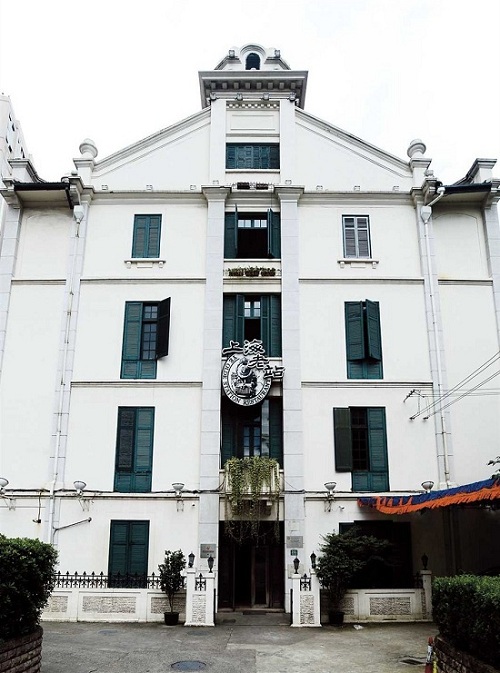
The four-story Shanghai Station Restaurant is the only remnant of the former Xujiahui Virgin Mary Convent.(Zhang Xuefei)
Every year, nearly 100 couples take their wedding vows in a domed hall atop a Shanghai restaurant in the heart of Xujiahui.
The four-story restaurant is the only remnant of what was once the Xujiahui Virgin Mary Convent.
"The restaurant building used to be a dormitory for the nuns in a site founded by the Convent of Sacred Heart," says Fudan University Professor Li Tiangang.
According to the "Xuhui Brief Record" published in 1933, the convent was originally founded in 1855 in Hengtang in Qingpu County. It was moved to Xujiahui in 1869.
The 6,000-square-meter convent was a mini society, featuring a Christian church for women, a hospital for foundlings, a kindergarten, two schools for girls, a school for deaf children, craft workshops and a nursing home for the elderly.
"The Xujiahui convent was influential," Li says. "It attracted Chinese women from wealthy families, who either missed the prime years for marriage or didn't want to get married at all. They brought their dowries with them. Poor women from neighboring towns like Taicang or Changshu (in today's Jiangsu Province) also joined the convent. It was obviously a better choice than working as a maid."
Shanghai Library expert Zhang Wei explains that the convent had a much larger population than the Tushanwan Orphanage for boys, also in Xujiahui, because baby girls were more often abandoned than boys.
"Archives show that ratio was 300 baby girls for every 30 baby boys," says Zhang, who wrote a book about the orphanage's operations and contributions.
A visitor to the convent in 1943 described its "grand, tall buildings in an environment of flower gardens and vegetable plots."
In an article published in the Sacred Heart newspaper, the unidentified visitor wrote: "The foundling hospital nursed and educated thousands of deserted babies. Many of them later left for work or started their own families, but there are still 550 children in the convent, including 180 babies, 200 children between the ages of four and 15, and more than 100 teens 15 years and older."
Walking through the convent, the writer said he was struck by two sentiments — sadness for the plight of abandoned children and joy that their suffering was eased by the devotion and care of the nuns.
"We saw every baby lying quietly in a tiny iron bed," he wrote. "Their clothes and quilts were neat and tidy. They were being well cared for. The young children were learning characters in kindergarten, while more elderly children were engaged in book-learning."
Zhang says baby boys also lived in the convent, looked after by the nuns, until they were six and then sent to the Tushanwan Orphanage.


















































